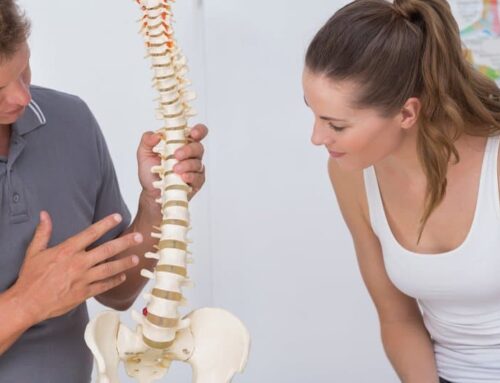
Spinal cord implantation is often referred to as the last resort when dealing with chronic pain. When conventional and non-surgical options have failed to provide pain relief, spinal cord implantation can provide a more effective alternate option. As many as 50,000 Americans receive spinal cord implants every year to alleviate chronic pain located at the back, legs, or both. Doctors and patients swear to its effectiveness, especially when compared to patients treated using conventional pain management methods. In fact, spinal cord implementation (also known as spinal cord stimulation, or SCS) can help reduce patients’ dependence on using pain medication. Pain relievers and painkillers are often present as supplementary treatments among chronic pain sufferers.
What is Spinal Cord Stimulation?
Electrical stimulation is a method of stimulating the nerves of muscles to treat pain. Specifically, a spinal cord stimulator (SCS) is implanted directly into the patient’s spinal cord. The implant delivers low-level electrical pulses into the spinal cord, which provides pain relief to chronic back and neck pain sufferers. The pulse delivered by the SCS device helps inhibit neuropathic pain signals before they reach the brain. Instead of the usual pain felt, patients may feel the gentle pulse of pain relief.
Spinal cord stimulation can represent an effective alternative pain relief method when conventional therapies and pain medications fail to deliver or produce worse side effects than the cure. At the same time, SCS provides a longer-term solution that often proves more economical than conventional therapies like medication in the long run.
A Short History of Spinal Cord Stimulation

Spinal cord implantation is not even new technology, having been around since the 1960s. While it was first proposed as a pain management solution in 1965 and first implanted in a patient in 1967, the idea behind the technology stretches back to Roman times.
The first accounts of neurostimulation started in Ancient Rome around 15 AD, when Scribonius Largus, the head physician of Emperor Claudius, observed the effects of contact with an electric ray (or torpedo) on his gout. He then recommended torpedo fish treatment for his fellow gout sufferers. However, the science behind electricity was little understood at the time until the 19th century. Besides, humans were only able to replicate electricity through the invention of true batteries by Alessandro Volta in the 1800s.
Only with the widespread availability of batteries in the 20th century did scientists begin to fully explore the science of neurostimulation using portable, low-powered, and non-lethal sources of electricity. The Melzack-Wall gate control theory, first presented in 1965, proposes that non-painful input closes the nerve "gates" to painful input. In return, this prevents pain sensation from traveling to the central nervous system. While the theory initially met skepticism and resistance, its basic tenets remain in place until today.
While spinal cord stimulators work under Melzack-Wall gate control theory, science has yet to explain how the system actually works or why it does. It is effective in varying degrees depending on the patient and the underlying condition. This is why it’s important to get a trusted expert's advice before considering treatments such as spinal cord implantation.
When Do Doctors Prescribe Spinal Cord Stimulation?
Nerve damage happens for many reasons, such as an accident, a traumatic injury, or an effect of a lingering disease. For decades, spinal cord stimulation helped provide pain relief to a number of specific conditions that cause neuropathic, ischemic, or visceral pain. SCS may apply to the following conditions:
- Failed back surgery (FBS) syndrome. This is when patients experience new pain symptoms after undergoing spinal surgery to address back or leg pain.
- Complex regional pain syndrome. This is a broad term describing pain from an arm or leg injury. Depending on the duration, CRPS can be acute or chronic. SCS can provide pain relief in both cases.
- Peripheral neuropathic pain. Peripheral neuropathic pain is caused by nerve damage beyond the spine or brain. These may be effects of viral infection, diabetes, surgery, or trauma.
- Ischemia. A condition where there is a lack of oxygenated blood to circulate throughout the body. Conversely, spinal cord implantation can also address vasculitis issues that result from inflammation of the blood vessels.
- Chronic visceral pain. Chronic visceral pain can manifest in patients suffering from chronic abdominal or pelvic conditions. Or patients who recently underwent surgery in the pelvis or abdomen.
Also, spinal cord stimulation can help relieve pain from other conditions such as:
- Angina, or heart pain of untreatable causes
- Spinal cord injuries
- Cancer-related pain
- Post-amputation pain
When applied correctly, spinal cord stimulation can improve the overall quality of life while reducing the need for pain relievers and medicines.
Before You Consider Spinal Cord Stimulation
No two pain symptoms are exactly alike. Before considering spinal cord stimulation as a possible option for your condition, it is important that chronic pain sufferers consult with their attending physician before making any decisions. Alternatively, they can also seek the professional advice of highly specialized interventional pain management specialists. To learn more about Interventional Pain Management Technology, visit or call contact MidSouth Pain Treatment Center for professional advice.
Qualifications For Spinal Cord Implantation
Only qualified health professionals can determine who can or cannot undergo spinal cord stimulation treatment. A number of specialists will evaluate candidates to determine the viability of SCS treatment. This includes assessing physical health, clearing medication, and tracing the patient’s pain history. The evaluation will also help determine if the candidate’s goal of pain relief is in line with what SCS can deliver.
A team consisting of a neurosurgeon, physiatrist, or pain management specialist will review the candidate's previous treatments, therapies, and surgeries before making a final recommendation. A psychologist will assess the patient’s overall state to assess the probability of a successful outcome.
Typical candidates that receive SCS clearance usually have chronic pain, which surgery failed to correct. They are more likely to secure clearance to proceed with SCS if they experience any of the following conditions below:
- When conservative therapies didn’t work.
- The pain’s source is a condition that can be and should be corrected.
- When additional surgery to reduce pain is not feasible due to bigger risks.
- There are no existing cases of depression or substance addiction.
- There are no medical conditions impeding SCS.
- If the patient passed the SCS trial phase successfully.

When Is Spinal Cord Implantation Not Recommended?
Conversely, medical experts do not recommend spinal cord stimulation treatments for patients with any or all the conditions below:
- Currently dealing with an infection, especially at or near the site where the Implantable Pulse Generator will be inserted surgically.
- When the patient is wearing a demand-type cardiac pacemaker.
- Suffering from severe depression or other psychiatric conditions that might be adding to the pain.
- Suffering from untreated bleeding disorders.
- Presently dealing with drug addiction issues.
In cases of one or more of the red flags show up during assessment, the patient will be advised to seek SCS treatment at a later time when none of the conditions above remain.
Spinal Cord Stimulator Devices
Advances in modern technology benefited the evolution of spinal cord stimulators. While all models operate under the same principle, some functions such as pulse delivery method, control, power supply, and charging are different.
Types of Spinal Cord Stimulator Devices
Currently, there are three major types of spinal cord stimulators available in the market today. They differ in the type and location of the battery used.
1. Conventional Implantable Pulse Generator (IPG)
With this model, the battery is installed in the spine along with the IPG. If the battery runs out of power, surgery is needed to take the old battery and replace it with a new one. Batteries for this model usually last between two to three years. The conventional IPG is recommended for patients with localized pain. Given the concentration of pain in a single area, less power is needed to provide pain relief.
2. Rechargeable Implantable Pulse Generator
This is the same as the conventional IPG model above, except that it uses rechargeable batteries. Charging the battery does not require removing the battery via surgery. Instead, the charger is placed in proximity of the battery and left in place until charging is complete. The rechargeable IPG is a better choice for patients with pain found in a large area or more than one location. While this model consumes more energy, the convenient recharging system helps ensure that power is always available.
3. Radiofrequency Stimulator
This SCS is an older version and has a power source located outside the body. While it does offer easier access to the power supply, this type of SCS is rarely used today due to its less efficient technology. However, patients with localized pain, and those who prefer fewer objects installed in their bodies, would understandably choose this option.
Components of an SCS
Whether conventional IPG, rechargeable IPG or radiofrequency stimulator, the SCS system consist of the following components:
- Leads. The typical SCS system consists of electrodes, which are also called leads, placed in the epidural space around the spinal cord. This is the area between the membrane (dura mater) and the vertebral wall that contains fat and small blood vessels. The epidural space is located just outside the dural sac, which surrounds the nerve roots and is filled with cerebrospinal fluid.
- Implantable Pulse Generator. The other end of the electrodes is connected to an implantable pulse generator (IPG), which controls pulses' discharge to the leads. Traditional spinal cord stimulators replace the sensation of pain with light tingling, called paresthesia.
- Remote Control. Modern SCS systems also feature an external remote control that can help power on or power off the IPG during situations or places that aren’t suitable for SCS (such as near metal detectors or areas with strong electromagnetic fields).
- Battery Charger. In more advanced systems that feature rechargeable batteries, a charger also comes with the SCS package. With batteries in the IPG located under the skin, the charger works in close proximity. The patient places the charger on the skin where the IPG is located under.
Implantable Pulse Generators
Implantable Pulse Generators allow patients to control the strength of electricity sent to the spine. Some conditions require a stronger pulse, while some patients prefer a gentler, lower setting.
IPGs usually have the following feature settings:
- Frequency. Frequency determines the number of times stimulation is delivered per second. The fewer the pulses per second, the lesser the sensation is felt. Conversely, too many pulses can be overwhelming.
- Pulse width. This refers to how much area the stimulation will cover.
- Pulse amplitude. Pulse amplitude deals with the patient’s threshold of perception of pain.
The attending surgeon will explain how to operate the device and adjust the intensity of the electrical signal. Depending on the body position, a different stimulator setting might be needed. For example, patients might need a stronger pulse when idle or a weaker signal when performing activities like walking or standing up. Most devices can save custom settings so that doctors or pain specialists can set up one or more presets. This removes the need for manual adjustments every time the patient requires a different setting.
Some newer models remove the tingling sensation for patients who find pulses uncomfortable and instead deliver “sub-perception” stimulation. This reduces the tingling effect great that stimulation becomes virtually undetectable by the wearer. Some of the newer SCS models feature several waveforms for electricity delivery, including high frequency, burst, and high-density stimulation.
A Word on SCS Batteries
SCS batteries need to stay in peak condition to deliver optimal stimulation every time. Conventional IPG batteries can work smoothly between two to five years before requiring replacement via surgery. The battery’s rate of wear depends on how frequently the patient uses the SCS.
Meanwhile, SCS powered by rechargeable batteries will last from eight to ten years, depending on its frequency. While the battery life is much longer, regular charging is required to keep the device at peak performance levels.
Undergoing Spinal Cord Stimulation Trial

Before committing to a full-time treatment, attending physicians will require candidates to undergo a trial to see if they can stand up to surgery's rigorous demands. They will also evaluate patients to see if they can deal with the changes brought about by the implanted device.
Trial Stage
The trial stage will determine if the recommended SCS treatment will work for a candidate. This will entail temporary implantation of the spinal cord stimulator for a few days to assess if the delivered pain relief is adequate. At the same time, the supervising medical team will assess if the candidate can handle the implant for the long term. The trial requires an outpatient procedure.
Within a week, patients will be asked to return to their doctor’s office and discuss if a permanent SCS is possible. The attending medical expert will also get feedback if the candidate's relief decreased the pain by 50% or better. This means that the goal of achieving pain relief is successful.
Actual Spinal Cord Implantation
If the trial is deemed successful and the patient consents to the actual implementation, surgery will be scheduled to install a more permanent version of the spinal cord implant. The actual surgery will take an hour or two. The majority of the operation time will involve making incisions along the back to serve as pathways for the electrodes and creating space along the spine to accommodate the leads. Another incision will be made in the buttocks area to house the IPG. In addition, should patients elect to have the implants removed for any reason, SCS is reversible, and all components can be removed.
What To Expect After Surgery
Spinal cord stimulation will not cure the condition, nor will it remove the pain entirely. If patients experience a 50% reduction in pain after the surgery, the treatment can be considered successful. The North American Neuromodulation Society reported that SCS helps achieve at least 50% pain relief in 50-60% of implanted patients based on multiple studies. Given the different causes and complications of chronic pain, experience and results may differ per patient.
At any rate, patients are advised to assess how much pain relief was reduced after surgery. They should also take enough time to rest so that the body can recover from surgery as well as get used to the spinal cord stimulator.
Risks to Spinal Cord Implantation
Outside of the complications due to surgery (clots, bleeding, allergic reaction, infection, etc.), SCS can present a number of reactions, including:
- Epidural hemorrhage or infection of the spine
- Cerebrospinal fluid leak
- Battery failure or leakage
- Lead migration or displacement, or IPG displacement
Patients are advised to seek medical help immediately for any signs of swelling, infection, pain, or any other symptom that generally signals something is wrong.
Get the Pain Relief You Deserve, Visit MidSouth Today!

Reducing pain can help you get back to the quality of life you used to enjoy. Spinal cord stimulation is a viable option to consider when previous surgeries didn’t get the job done, and further operations pose an even greater risk.
To determine if you qualify for spinal cord implantation, call or visit us at MidSouth Pain Treatment Center today or give us a call at (866) 707-1942. Our staff of highly trained pain management experts can help assess if spinal cord stimulation can help provide relief to your pain or if there are alternative methods available that can help you better.
Outside of spinal cord stimulation, MidSouth Pain Treatment Center realizes that pain is a subjective experience. Only through a careful understanding of the symptoms and underlying causes can we share our diagnosis and offer a recommendation to alleviate the suffering. Visit MidSouth today and learn more about alternatives to living a life of pain.





